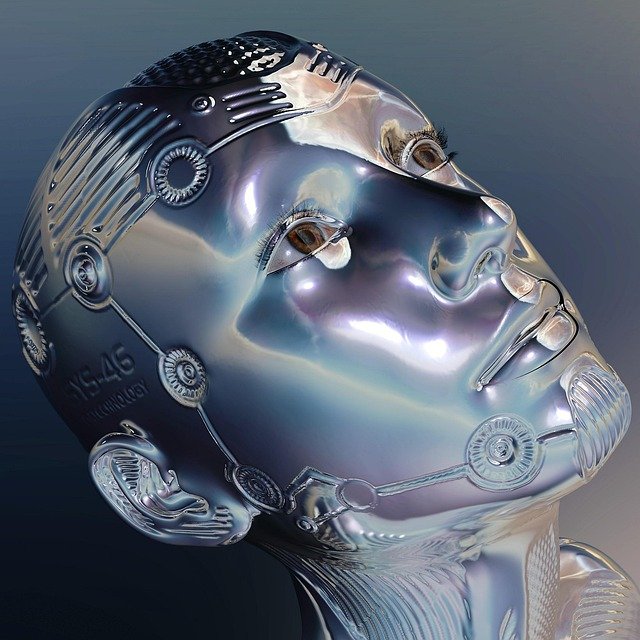The 10 Most Popular AI Tools in 2025: A Guide to the Future of Productivity

The year is 2025, and artificial intelligence is no longer a futuristic concept—it’s the very fabric of our digital workflow. The tools that dominated the conversation just a year or two ago have evolved, merged, and been joined by a new wave of even more sophisticated platforms. Staying ahead of the curve means understanding which tools offer genuine value, enhance productivity, and unlock new creative potentials.
This list isn't just about what's trending; it's a curated look at the AI tools that have proven their worth across industries, from creative studios to corporate boardrooms. Let's dive into the 10 most popular AI tools shaping 2025.
The Evolution of the AI Landscape in 2025
Image depicting artificial intelligence future; related concepts: robot, machine
The AI tools of 2025 are characterized by a few key shifts. First is the move from single-task tools to integrated agentic ecosystems. Instead of just generating an image or writing a paragraph, these AI agents can plan and execute multi-step projects autonomously. Second, personalization has reached new heights. Tools now deeply learn your individual style, preferences, and workflows, acting as a true digital extension of yourself. Finally, there's a massive emphasis on real-time, multi-modal interaction. The lines between text, voice, image, and video are blurring, allowing for seamless and intuitive creation.
Top 10 AI Tools Dominating 2025
 Image depicting aI design studio; related concepts: home studios, nature
Image depicting aI design studio; related concepts: home studios, nature
Here are the platforms that are making waves and delivering tangible results this year.
1. Cognosys
Category: Autonomous AI Agent Platform Cognosys has emerged as the leader in the world of AI agents. Instead of responding to simple prompts, you give Cognosys a high-level objective—like "plan a full marketing campaign for a new sustainable coffee brand targeting millennials"—and it will autonomously break down the task, conduct research, draft copy, design assets, and even schedule the campaign rollout.
- Why it's popular: It eliminates the need for micro-managing AI, freeing up human experts for strategic oversight.
- Best for: Project managers, marketers, entrepreneurs, and researchers.
- Practical Example: A startup founder can task Cognosys with "Analyze the competitive landscape for electric bikes in Europe and create a investor pitch deck." The agent will return with a structured report, SWOT analysis, and a polished presentation.
2. Gemini Ultra 2.0 (by Google)
Category: Multimodal Foundation Model While ChatGPT remains a powerhouse, Google's Gemini Ultra has taken a significant lead in 2025 with its deeply integrated and fluid multimodal capabilities. Its understanding of context across text, code, audio, and video is unparalleled. Its deep integration with the entire Google Workspace (Docs, Sheets, Meet, Gmail) makes it the productivity glue for millions of businesses.
- Why it's popular: Its real-time "conversational" mode during video calls, providing live summaries and action items, is a game-changer.
- Best for: Teams already in the Google ecosystem, knowledge workers, and developers.
- Actionable Advice: Use Gemini in Google Sheets to not just generate formulas but to analyze complex datasets and create predictive models with natural language commands.
3. Midjourney 6.5 / Adobe Sensei GenAI
Category: Visual & Design Creation
The battle for visual AI supremacy is fierce, but two winners have emerged. Midjourney 6.5 continues to lead with its hyper-realistic and artistically stunning image generation, now with full consistency for character and brand across multiple images. On the other side, Adobe Sensei GenAI wins for professionals due to its seamless integration directly into Photoshop, Illustrator, and After Effects. You can generate assets that are already in your workflow as layered PSD files, making it an indispensable tool for designers.
- Why it's popular: Midjourney for pure creativity and art; Adobe for professional, workflow-integrated design power.
- Best for: Graphic designers, artists, content creators, and marketing agencies.
4. Claude (Anthropic)
Category: Conversational AI & Analysis Praised for its nuanced understanding, long-context window, and strong constitutional AI principles (making it careful and unbiased), Claude is the go-to for deep analysis and handling complex documents. In 2025, its context window is virtually unlimited, allowing it to analyze entire codebases or lengthy legal documents in a single conversation.
- Why it's popular: Its ability to reason, show its "thinking," and handle massive amounts of information with precision makes it trusted for sensitive tasks.
- Best for: Writers, lawyers, academics, and developers needing code analysis.
- Practical Example: Upload a 100-page PDF of a research paper and ask Claude to summarize the key findings, identify methodological limitations, and suggest areas for further research.
5. Runway ML Gen-4
Category: Video Generation & Editing Runway has fully democratized high-end video editing and generation. With Gen-4, users can generate high-fidelity, consistent short films from text prompts or, more impressively, use tools like "Inpainting" to edit videos with text. Don't like the jacket your actor is wearing? Simply highlight it and type "change to a red leather jacket." The AI handles the rest with shocking realism.
- Why it's popular: It puts Hollywood-level VFX and editing power on the laptop of every indie creator and marketer.
- Best for: Video editors, filmmakers, social media managers, and advertisers.
6. Tango
Category: Productivity & Workflow Automation This isn't just another note-taking app. Tango is an AI-powered workflow capturer and creator. As you perform a digital task (e.g., generating a monthly report in Excel), Tango silently documents your process. With one click, it can turn that process into a beautiful, step-by-step standard operating procedure (SOP) guide, complete with screenshots and instructions. It can then automate that exact process the next time it needs to be done.
- Why it's popular: It solves the massive corporate problem of knowledge silos and inefficient onboarding.
- Best for: IT teams, consultants, operations managers, and anyone who creates training materials.
7. GitHub Copilot X
Category: Software Development
Copilot has evolved from a code-completion tool to a full-fledged AI-powered development environment. Copilot X integrates directly into pull requests, documentation, and even the command line. It can explain complex code, suggest entire systems, detect vulnerabilities, and answer questions about a codebase without you ever leaving your IDE.
- Why it's popular: It dramatically accelerates development cycles, reduces bugs, and helps developers learn new technologies on the fly.
- Best for: Software developers of all levels, from students to senior engineers.
- Code Block Example:
# User types a comment: # Function to fetch user data from API and clean the date of birth field # Copilot X suggests the entire function: def fetch_and_clean_user_data(api_url): response = requests.get(api_url) data = response.json() for user in data['users']: # Convert various date string formats to YYYY-MM-DD user['dob'] = standardize_date(user['dob']) return data
8. Sierra
Category: AI Customer Service Agent Moving far beyond the frustrating chatbots of old, Sierra is an AI agent that can actually solve complex customer problems in real-time. It integrates with a company's systems to handle things like complicated returns, subscription changes, and technical troubleshooting—all with empathy and context awareness, and it knows exactly when to escalate to a human.
- Why it's popular: It genuinely improves customer satisfaction while drastically reducing support costs.
- Best for: E-commerce businesses, SaaS companies, and any organization with a large customer service operation.
9. Humane AI Pin & Rewind Pendant Ecosystem
Category: Ambient / Wearable Computing While not a software tool in the traditional sense, this hardware-software ecosystem represents a major shift. These devices act as a second brain, recording and indexing your real-life interactions and conversations (with permission and privacy controls). You can then ask your AI, "What was the name of that restaurant my colleague mentioned last Tuesday?" or "Summarize the key action items from my morning meeting."
- Why it's popular: It offloads the task of remembering and note-taking, allowing for truly present and focused human interaction.
- Best for: Executives, journalists, students, and anyone who attends many meetings or values mindfulness.
10. Otter.ai Pilot
Category: Real-Time Meeting Assistance Otter.ai was already famous for transcription, but its "Pilot" feature in 2025 is revolutionary. It doesn't just transcribe; it actively participates in meetings. You can assign it goals like "Ensure we decide on a launch date" or "Gently remind us if we go off topic." It can also be asked to speak up and provide data or insights in real-time during the discussion.
- Why it's popular: It transforms meetings from passive note-taking sessions into highly productive, outcome-driven discussions.
- Best for: Remote teams, managers, and anyone who wants to make meetings more efficient.
How to Integrate These Tools Into Your Workflow
Adopting these powerful tools can be overwhelming. Here’s a practical approach:
- Identify a Pain Point: Don't use AI for AI's sake. Start with a single, repetitive task that consumes too much time (e.g., writing meeting summaries, creating first drafts of social media posts, debugging code).
- Pick One Tool: Select one tool from this list that directly addresses that pain point. Master it.
- Develop a "Human-in-the-Loop" System: AI is a collaborator, not a replacement. Establish a workflow where the AI generates the first draft or handles the heavy lifting, and you provide the strategic direction, editing, and final approval.
- Iterate and Expand: Once you're comfortable, identify another area and slowly expand your AI toolkit. The goal is augmentation, not total automation.
The AI tools of 2025 are powerful, contextual, and deeply integrated. They are moving from being novelties to becoming essential partners in creativity and productivity. By understanding and strategically adopting these tools, you can not only keep pace with the future but actively shape it.
